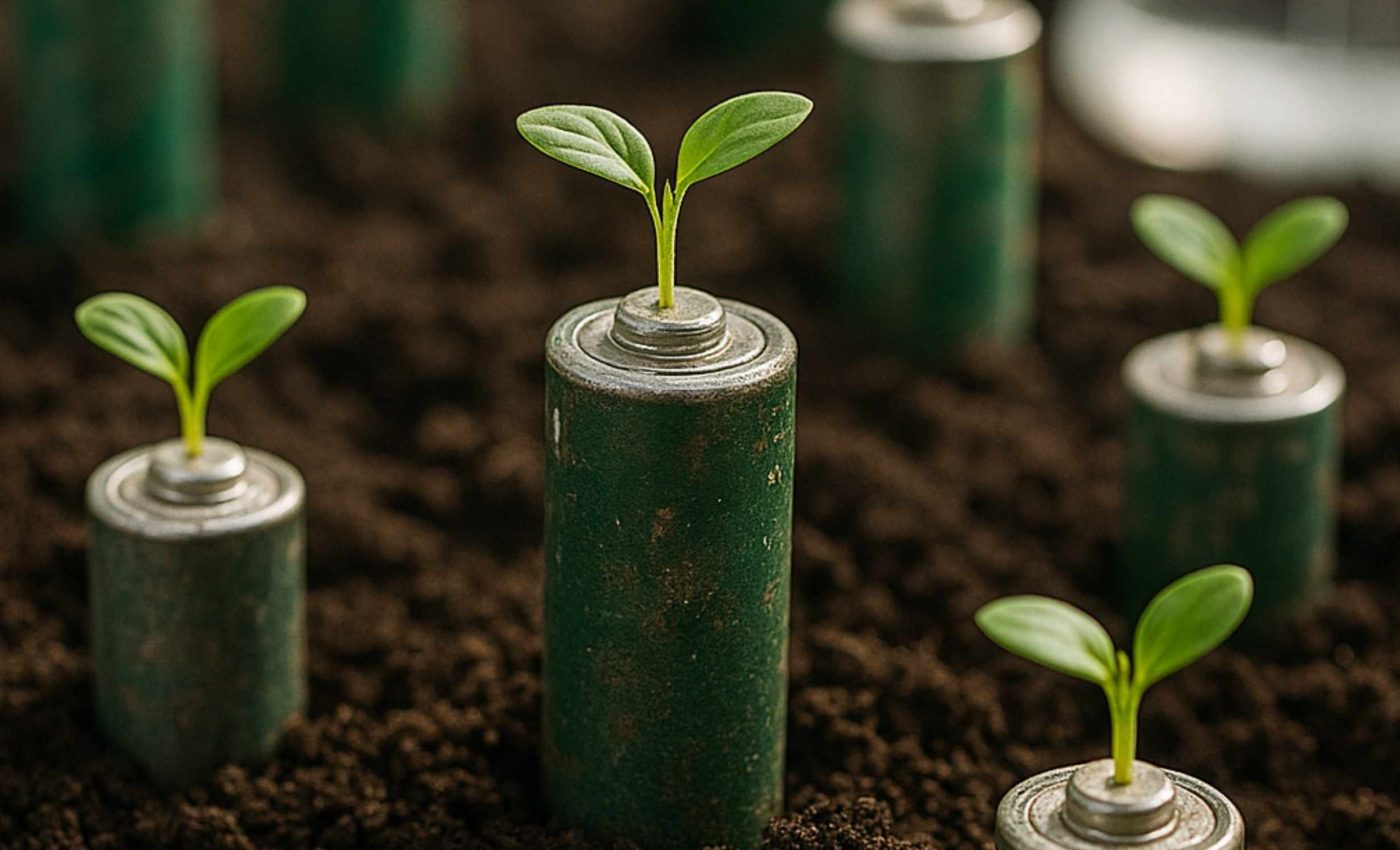
Old batteries uncovered: New path to cleaner fuel
Many people wonder what to do with the endless stream of used batteries. Batteries can contain toxic elements of nickel that escape into water or soil if they are tossed out incorrectly, raising concerns for public safety and wildlife.
Experts at the Institute of Materials Chemistry (IMC) have introduced a plan for extracting nickel from Ni-MH batteries and recovering aluminum from everyday foil.
The experts’ work is led by Prof. Günther Rupprechter from the Institute of Materials Chemistry at TU Wien. The strategy involves making a nanocatalyst that converts carbon dioxide into methane using moderate conditions and minimal pressure requirements.
Making use of nickel from batteries
“Recycling is an important step, but even greater impact can be achieved by upcycling nickel into catalysts capable of producing fuels,” said Dr. Qaisar Maqbool, first author of the study.
Aluminum foil adds the second ingredient. Ni-MH batteries, widely used in portable gadgets, hold valuable nickel. Separating that metal from old batteries can be complicated, but the effort is worthwhile.
Both scraps undergo a series of treatments in solutions. Nickel salts are extracted from the battery parts, while aluminum foil is turned into a stable oxide.
Then both ingredients are combined, dried, and heated to form an active solid. That final material supports nickel particles on aluminum oxide.
Transforming carbon dioxide
Carbon dioxide can be converted into methane in a reaction often called CO₂ methanation. Scientists have been testing metal-based catalysts for this process for years. By mixing the new catalyst with a stream of CO₂ and hydrogen, the final product is methane.
“We believe that this approach can transform sustainable fuel production,” stated Prof. Rupprechter. Producers may collect the resulting methane for industrial energy demands.
Some believe this approach can be paired with renewable hydrogen systems to reuse captured CO₂.
Nickel catalyst has steady performance
Researchers report that the nickel-alumina catalyst holds up well at normal pressures and moderate temperatures. That resilience suggests it could find use in large-scale operations without suffering significant damage.
Tests indicate the catalyst is stable and maintains a good conversion rate of CO₂ even with temperature adjustments. Reliability matters because catalysts often lose efficiency over time, especially in repeated heating cycles.
The team, however, did not spot a major drop in the performance of the nickel-based system in their trials. That stability is a key advantage when considering industrial adoption.
Recycling nickel and aluminum as catalysts
Spent catalysts can accumulate carbon buildup or structural changes. Even if efficiency stays high, a plan is needed for the final phase. This team focused on easy recycling.
Spent nickel and aluminum are separated through a mild chemical treatment, leaving both metals ready for another round of use. Those steps highlight a desire for full-circle resource usage.
This means nickel and aluminum can go back into new catalysts instead of ending up as garbage. Chemists point out that this loop may lower overall emissions and operating costs for companies involved in renewable fuels.
Environmental benefits of battery disposal
Battery disposal has long been a thorny subject for local waste facilities. Spent Ni-MH units sometimes end up abandoned. Nickel, a heavy metal, can leach into soil or water without careful handling.
Meanwhile, aluminum foil is often discarded after a single kitchen use, despite its high potential for reuse. By turning both into a single product, the project cuts down on metal waste and puts those metals to work.
Such methods may trim reliance on fresh raw materials. That is crucial as industries hunt for new ways to conserve finite resources.
Where research might go next
“Now we want to investigate how this process can be scaled up for technological applications,” shared Prof. Rupprechter. Results so far point to an encouraging path, though more refining is needed.
Smaller pilot systems might appear first in academic labs. Then, if these do well, larger facilities could adopt the strategy.
Some organizations see potential to fit this model into sectors where methane is in high demand. Continued progress depends on reliable suppliers for waste batteries and used foil. It also hinges on the ability to bring down costs for hydrogen.
Closing the loop
This concept aims to blend two environmental dilemmas – battery waste and CO₂ buildup – into one practical fix. The catalyst’s durability and straightforward production offer a notable opportunity for business ventures wanting cleaner energy.
A system that helps keep nickel and aluminum out of landfills may also reduce the impact on natural habitats. Such efforts reflect a broader emphasis on recovering metals for reuse.
Leaders in the field see it as a logical move toward a future with smaller carbon footprints and less industrial discard. The approach also shows how hidden value can be tapped from items commonly seen as trash.
The study is published in Green Chemistry.
—–
Like what you read? Subscribe to our newsletter for engaging articles, exclusive content, and the latest updates.
Check us out on EarthSnap, a free app brought to you by Eric Ralls and Earth.com.
—–













